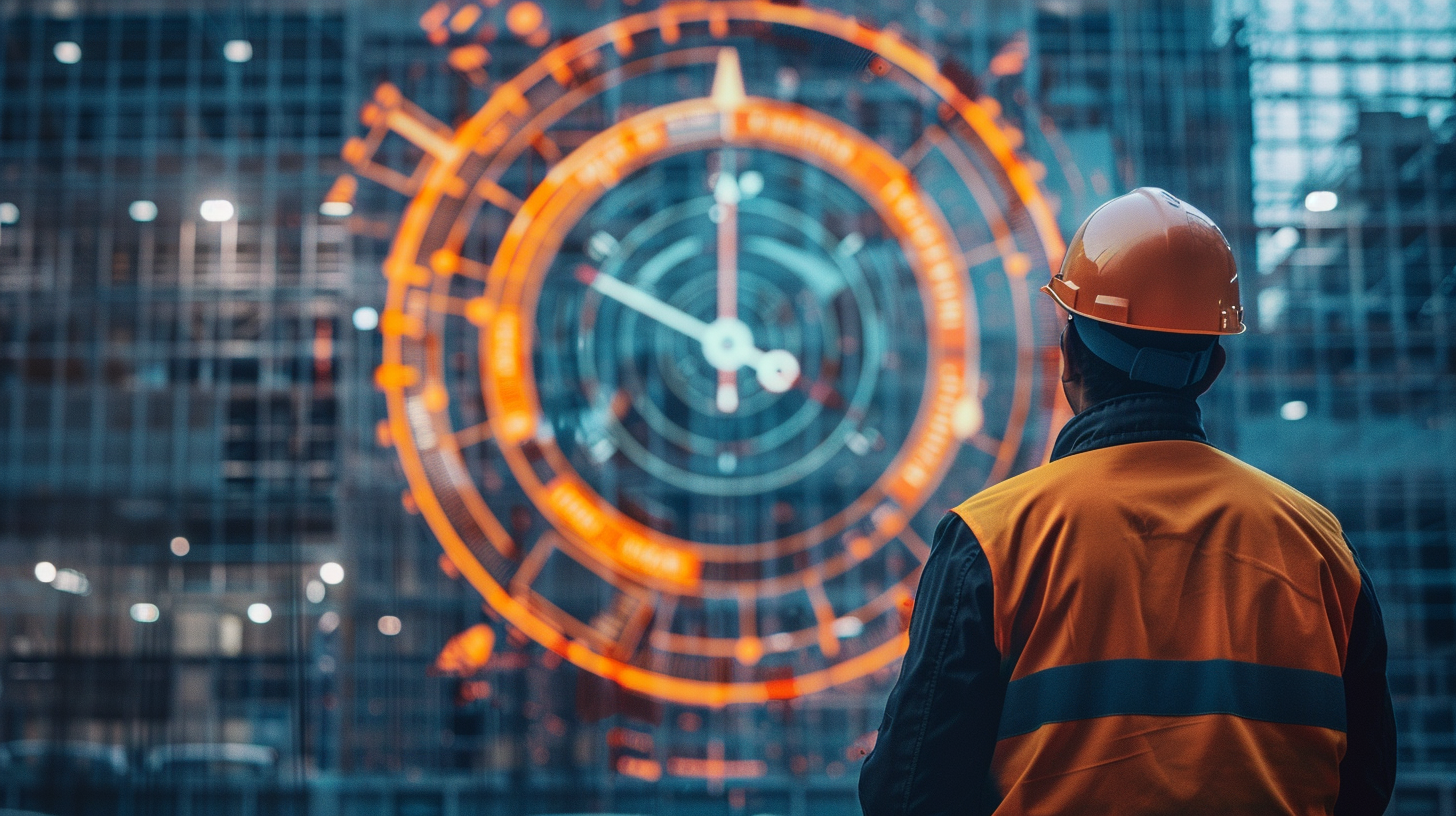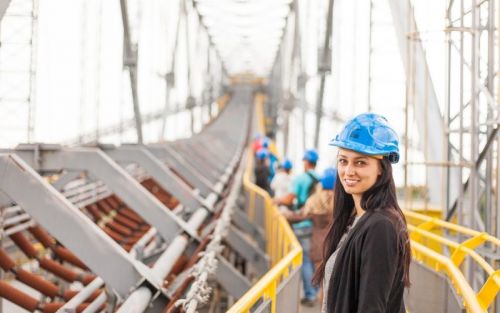
The backbone of any successful construction project is a well-managed workforce.
Traditionally, this has relied on manual timekeeping methods, often involving paper time cards or punch clocks.
The survey revealed that nearly half (44%) of employers utilizing manual time tracking methods report incidents of time theft.
In contrast, 67% of business owners employing electronic time tracking systems indicate that they seldom or never face issues related to time theft.
A biometric time clock is a timekeeping system that utilizes an employee’s unique biological characteristics to identify them and record their work hours.
Unlike traditional methods that rely on punch cards or PIN codes, biometric clocks use scanners to capture features like fingerprints, facial structures, iris patterns, or even hand geometry.
This captured data is then compared to a stored database to verify the employee’s identity and log their clock in/out times.
At the heart of a biometric timekeeping system lies a focus on both security and accuracy.
The process begins with enrollment, where employees provide their unique biometric data, like a fingerprint scan or facial image.
For security reasons, the system stores a digital template of this data, not the raw image itself.
Whenever an employee clocks in or out, the scanner captures their chosen biometric identifier throughout the workday.
This captured data is then compared against the stored template in the system’s database to verify the employee’s identity.
Once confirmed, the system automatically records the time and eliminates the need for manual timesheets.
Biometric systems also offer a real-time advantage, allowing managers to track employee attendance patterns.
This data proves valuable for workforce management, project planning, and ensuring accurate payroll processing.
Biometric time clocks offer advantages that appeal to many businesses, but some industries see them as particularly beneficial.
Here are some of the leading adopters:
Construction: As discussed, construction sites with large workforces and strict deadlines benefit from the accuracy and security provided by biometric clocks.
Manufacturing: Similar to construction, manufacturing facilities often have shift work and a need to prevent buddy punching (someone clocking in for a coworker). Biometric systems address these concerns.
Finance and Security: Financial institutions and security companies prioritize data security. Biometrics offers a strong layer of authentication for employees accessing sensitive areas or information.
Retail and Hospitality: Employee theft and time theft can be a concern in retail and hospitality. Biometric clocks can help deter these issues.
Government Agencies: Government agencies often handle sensitive data and require secure access control. Biometrics can be used for both timekeeping and building access.
Construction sites are a dynamic environment with a fluid workforce.
Managing this workforce effectively requires accurate timekeeping practices to ensure fair pay, project efficiency, and cost control.
Biometric attendance systems offer a significant leap forward compared to traditional methods like paper timesheets or punch clocks. Here’s how:
Biometric systems rely on unique biological identifiers like fingerprints or facial recognition, eliminating the possibility of “buddy punching” (clocking in/out for a coworker) or timesheet errors by 99% in one day.
In construction, with tight margins and project deadlines, such discrepancies can translate to significant financial losses. Biometrics eliminates this risk.
Biometric systems streamline the timekeeping process. Employees simply scan their fingerprints or faces, eliminating the need for physical cards or remembering PIN codes.
This saves valuable time for both employees and supervisors, allowing them to focus on core tasks.
Paper-based timesheets require manual data entry, which is tedious and error-prone.
Biometric systems automate data collection, saving the HR and accounting departments time by around 75 days annually and allowing them to focus on more strategic initiatives.
Biometric data is unique to each individual, making it extremely difficult to forge.
This adds a layer of security to the worksite, preventing unauthorized access and ensuring that only authorized personnel are clocking in/out of the geo-fenced worksite.
Biometric systems provide real-time data on employee attendance, allowing for better project planning, resource allocation, and payroll processing.
Managers can easily identify labor trends and adjust staffing levels accordingly.
By eliminating buddy punching and timesheet errors, biometric systems ensure accurate payroll calculations.
This translates to cost savings for construction companies and 100% system implementation ROI in less than a month.
A system perceived as fair and accurate can boost employee morale. Biometrics ensure that everyone is paid for the hours they actually work, fostering trust and reducing disputes.
There is no overarching federal law dictating how employers can utilize biometric data for timekeeping purposes.
Instead, regulations are primarily established at the state level. For construction companies considering this technology, it’s crucial to understand the specific laws within their state of operation.
Key factors to consider include obtaining written consent from employees (as mandated in states like Illinois with BIPA), ensuring secure storage of biometric data, and adhering to proper disposal procedures.
This law mandates that any organization collecting biometric data, like fingerprints or facial scans, for timekeeping or other purposes must destroy this information permanently once it’s no longer needed.
This can happen in two ways: when the original reason for collecting the data is fulfilled or after three years since the employee’s last interaction with the company, whichever comes sooner.
Furthermore, with biometric privacy becoming a growing area of legal focus, it’s wise to stay informed about possible future legislation that could impact the use of biometric time clocks.
While biometric time and attendance systems offer significant benefits, some drawbacks exist. Here’s how to potentially mitigate these concerns:
Privacy Concerns: Address privacy anxieties head-on with clear communication. Explain how the data is collected, stored, and secured. Emphasize compliance with data privacy laws and highlight the limited use of the data solely for timekeeping purposes.
Cost: Explore cost-effective options. Cloud-based solutions can offer lower upfront costs compared to traditional hardware setups. Additionally, consider the long-term cost savings from reduced errors and streamlined timekeeping processes.
Accuracy Errors: Invest in high-quality biometric scanners and ensure proper installation in well-lit areas. Implement a maintenance plan to keep the scanners clean and functioning optimally.
For recurring fingerprint issues, offer alternative identification options like a facial recognition system.
System Downtime: Have a reliable backup system in place, such as swipe cards or a mobile app with offline functionality. This ensures employees can still clock in/out during system downtime.
Limited Applicability: Explore advanced solutions with additional geo-fencing mobile apps for remote workers or integrate the biometric system with existing project management tools for construction sites with variable locations.
Biometric time clock systems like fingerprint or facial recognition technology reduce payroll fraud and improve efficiency by offering real-time data, which helps in managing projects and processing payroll accurately.
For construction sites, where workforce management is critical, biometric systems offer benefits, including increased accuracy, reduced administrative burden, and enhanced site security.
MobiClocks®, a cloud-based system tailored for the construction sector, aligns with these advancements by implementing true face recognition technology.
It further enhances site management with its geo-fencing function, ensuring employees are within designated work areas.
It also offers flexible timekeeping options through mobile applications and kiosk setups.
To further explore the financial impact and potential savings of implementing MobiClocks® at your company, explore MobiClocks® Savings Calculator.

There are a lot of ways to deal with no call, no show employees. The policies you enforce will depend on the type of manager you are.

Naturally, productivity and work ethics are positively and strongly correlated. There are many ways to set up a work environment where ethics are valued, and one of the most effective ways has proven to be guidance and empowerment. If you are ready to tak

Having an employee handbook is essential to the efficient operations of your business. In general, it contains all the procedures and policies that go on in your firm. It’s vital to have one, especially in construction companies, where logistics plays a h